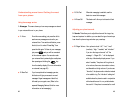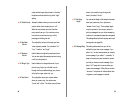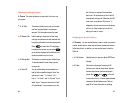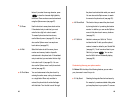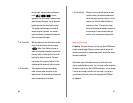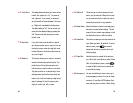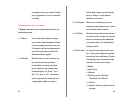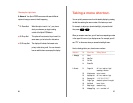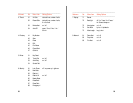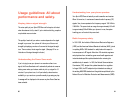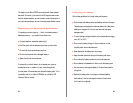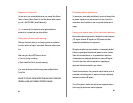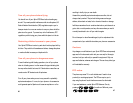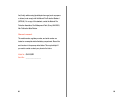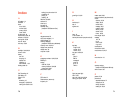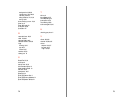
Usage guidelines: All about
performance and safety.
Keeping tabs on signal strength.
The voice quality of your Sprint PCS Phone will always be at its best
when the antenna is fully raised. If you’re inside a building, reception
may be better near a window.
The quality of each call you make or receive depends on the signal
strength in your area. Your phone will inform you of the current
strength by displaying a number of bars next to the signal strength
icon. The more bars, the stronger the signal. (See page 10 for an
illustration of the signal strength indicator.)
Understanding the Power Save mode.
If you’re trying to use your phone in an area where there is no
signal, the Power Save feature will automatically activate to conserve
battery power when you’ve been unable to pick up a signal for 15
minutes. If your phone is on, it will periodically recheck service
availability, or you can do so yourself manually by pressing any key.
A message will be displayed on the screen any time Power Save has
been activated.
60
Understanding how your phone operates.
Your Sprint PCS Phone is basically a radio transmitter and receiver.
When it’s turned on, it receives and transmits radio frequency (RF)
signals. Your phone operates in the frequency range of 1851 MHz to
1989 MHz. The power level can range from approximately 0.01mW
to approximately 300mW. When your phone is in use, the system
handling your call controls the power level.
Radio frequency safety.
In 1991-1992, the Institute of Electrical and Electronics Engineers
(IEEE) and the American National Standards Institutes (ANSI) joined
in updating ANSI’s 1982 standard for safety levels with respect to
human exposure to RF signals. More than 120 scientists, engineers
and physicians from universities, government health agencies and
industries developed this updated standard after reviewing the
available body of research. In 1993, the Federal Communications
Commission (FCC) adopted this updated standard in a regulation.
In August 1996, the FCC adopted a hybrid standard consisting of
the existing ANSI/IEEE standard and the guidelines published by the
National Council of Radiation Protection and Measurements (NCRP).
61



